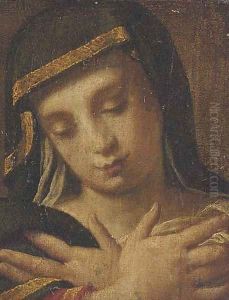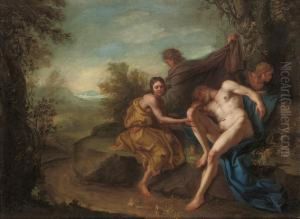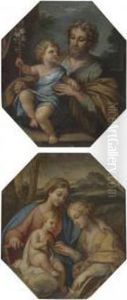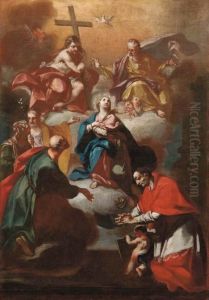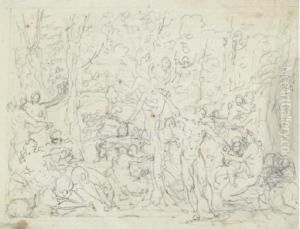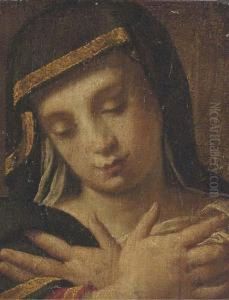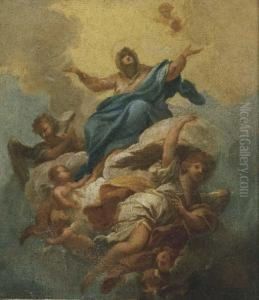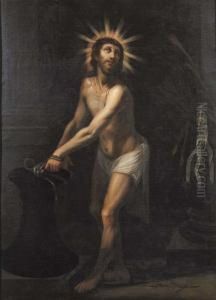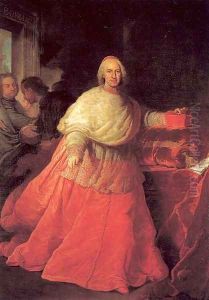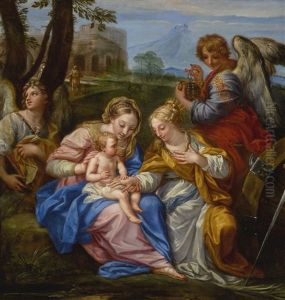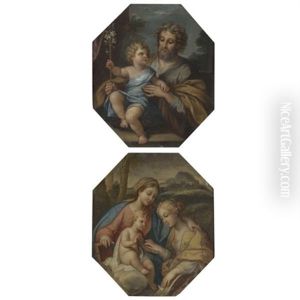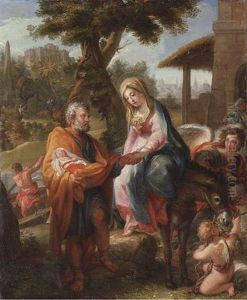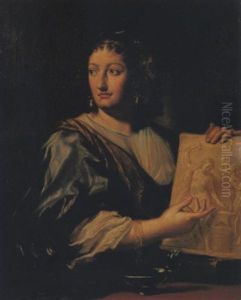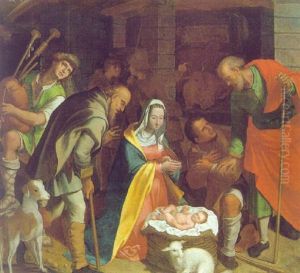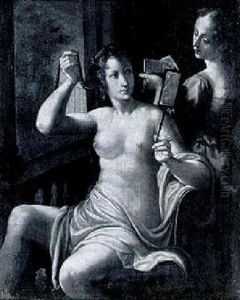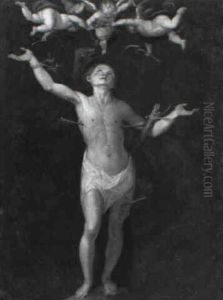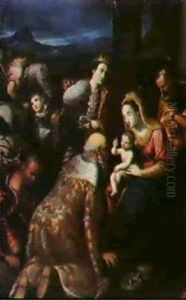Andrea Procaccini Paintings
Andrea Procaccini was an Italian painter born in the year 1671 in Rome. He was recognized for his work as a painter in the late Baroque period, which was characterized by an exuberant style, complex compositions, and a dramatic use of light and shadow. Procaccini came from a family of artists; his uncle was the painter Giovanni Battista Procaccini, who had a significant influence on Andrea's development as an artist.
Procaccini received his early training in the arts from his family, and he later became a pupil of the renowned painter Benedetto Luti. Under Luti's guidance, he honed his skills in drawing and painting, developing a style that was influenced by the Roman Baroque tradition. His work often featured religious themes, a common subject matter for artists of his time, but he also painted mythological scenes and portraits.
Procaccini's talent was recognized by important patrons, including members of the Catholic Church. His ability to create vivid, lifelike representations of sacred subjects earned him commissions for altarpieces and frescoes in various churches in Italy. One of his notable works includes the frescoes in the chapel of St. Philip Neri in the church of Santa Maria in Vallicella, also known as Chiesa Nuova, in Rome.
In 1719, Procaccini was summoned to Spain by King Philip V, where he worked as a court painter. In Spain, he continued to produce works of religious art, as well as portraits of the royal family and nobility. His style was well-received in Spain, where he contributed to the spread of the Italian Baroque aesthetic. Procaccini remained in Spain until his death in 1734.
Throughout his career, Andrea Procaccini was known for his masterful use of color and for the dramatic intensity of his compositions. His works are characterized by their dynamic forms and the emotional expressiveness of the figures he depicted. Despite not being as widely known as some of his contemporaries, Procaccini left a notable mark on the art of his time, particularly in the contexts of the Roman Baroque and the Spanish court. His legacy includes a body of work that continues to be studied and appreciated for its artistic merit and historical significance.
